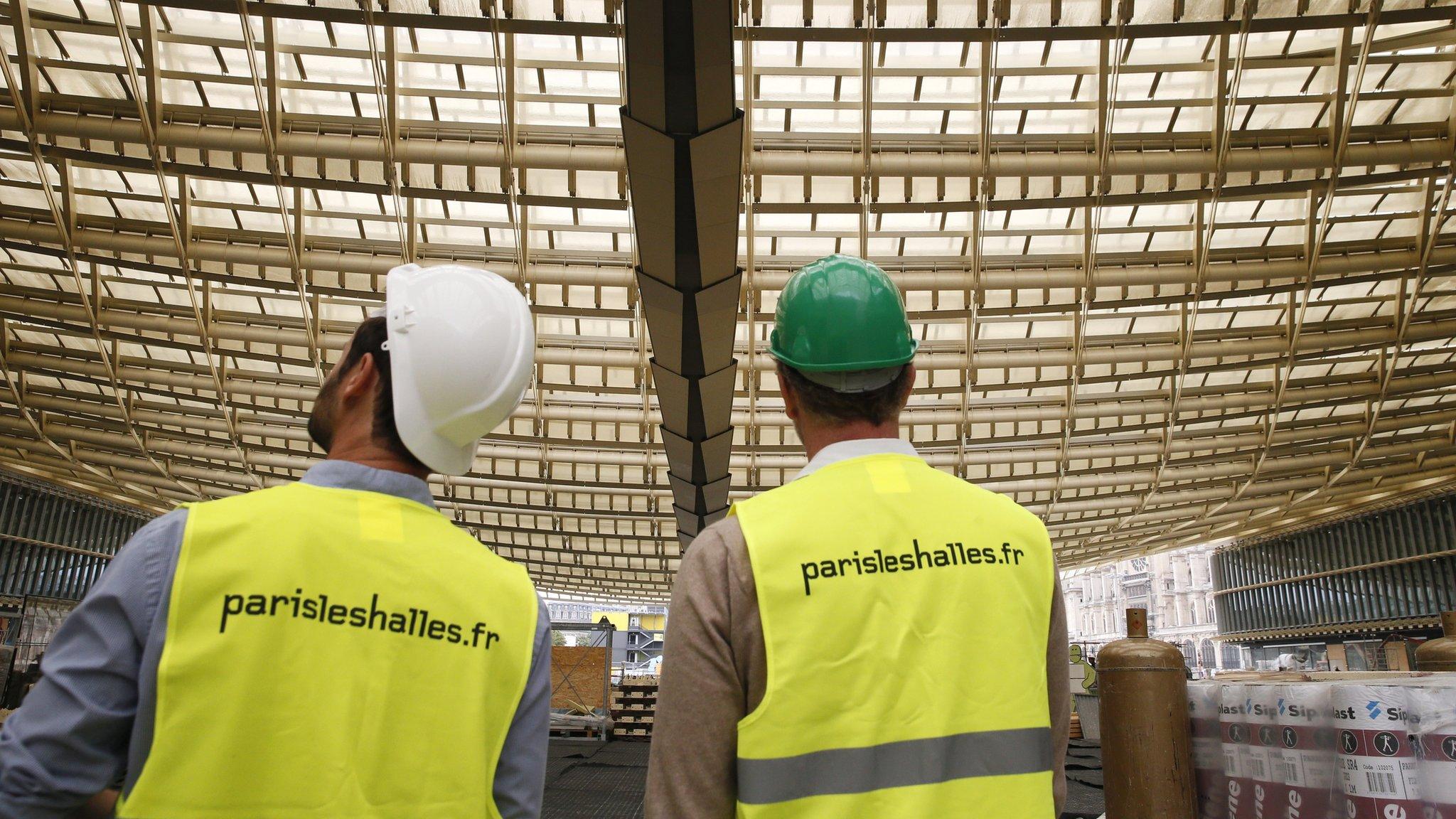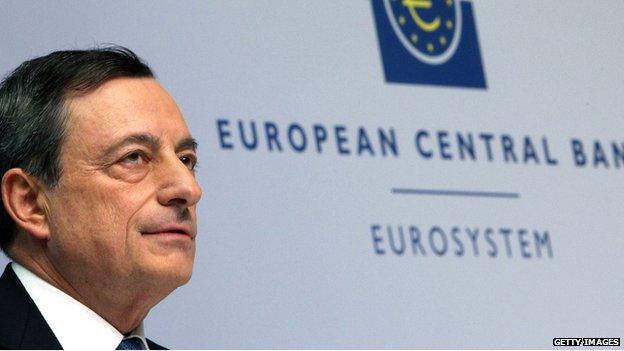Eurozone jobless rate lowest for three years
- Published

Unemployment in the eurozone fell to its lowest rate in July for more than three years, figures have shown.
European Union statistics agency Eurostat , externalsaid the jobless rate in the currency union fell to 10.9% in July from 11.1% the month before.
The fall was helped by a sharp fall in unemployment in Italy, where the jobless total fell by 143,000.
It is the first time the unemployment rate in the eurozone has been below 11% since February 2012.
The wider 28-member EU saw the unemployment rate fall to 9.5%, the lowest rate since June 2011.
The lowest unemployment rate was in Germany, at 4.7%. Greece had the highest unemployment rate, at 25%, the latest available data from May showed, followed by Spain at 22.2%.
The rate of youth unemployment across the eurozone also declined to 21.9% in July from 22.3% a month earlier.
'Step forward'
A survey released earlier on Tuesday suggested that growth in the eurozone's manufacturing sector had eased slightly in August, despite factories barely raising prices.
The closely-watched Markit eurozone manufacturing purchasing managers' index (PMI), external was 52.3 last month, below a preliminary reading that suggested it had held steady at July's reading of 52.4. However, it has remained above the 50 mark that separates growth from contraction for more than two years.
There was some good news within the data. Germany, the Netherlands, Ireland and Italy all saw strong growth, with Germany's manufacturing PMI reading jumping to 53.3 in August from 51.8 a month earlier.
Rob Dobson, senior economist at Markit, said the data suggested the eurozone manufacturing sector showed continued resilience in August, with output growth and inflows of new business both strengthening.
"Based on the historical relationship, the PMI is tracking at somewhere close to a 2% annualised increase in industrial production so far in the third quarter, a modest gain but still representing a positive step forward," he said.
"The job numbers are also looking more positive, with employment rising at the fastest pace in four years. On the inflation front, lower oil prices led to the first dip in input costs since February, while selling prices remained close to stagnation."
The manufacturing figures come almost six months into the European Central Bank's (ECB) €60bn-a-month bond-buying programme designed to inject new life into the eurozone economy and combat low inflation, which is currently sitting at 0.2%.
With inflation still far from the ECB's target rate of just below 2%, and looking likely to stay there for the foreseeable future, speculation is growing the bank will have to extend its stimulus programme beyond the planned completion in September 2016.
- Published14 August 2015

- Published3 June 2015

- Published3 August 2015
